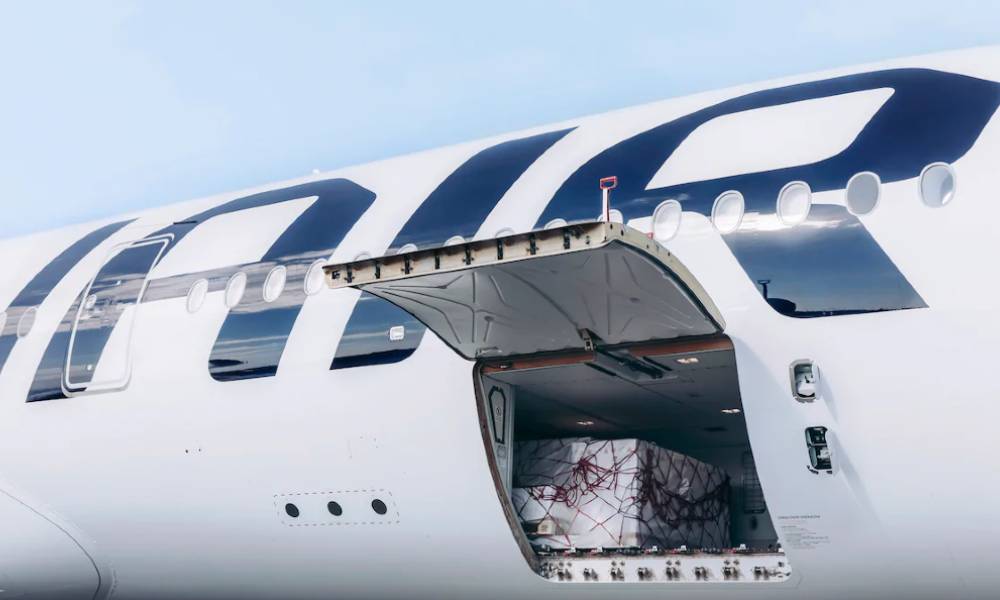
How Finnair Cargo has kept busy during the Covid-19 pandemic
Finnair Cargo has converted three Airbus A330 passenger aircraft into cargo planes, with the cabins used to maintain vital supply chains of Covid–19 related products, such as face masks and surgical gloves.

While the Covid-19 pandemic has seen a reduction in the number of people flying, the amount of cargo being transported by air has remained stable. The past 10 months have seen Finnair Cargo become an even more vital part of our business, showing the power of being able to adapt quickly to meet the demands of the new normal.
“One of the biggest things we had to encounter was the mind shift,” explains Fredrik Wildtgrube, VP, Finnair Cargo. He adds, “Previously we’d been contributing to a passenger driven airline, with cargo trying to maximise the benefits for the company of the whole capacity of our aircraft. When the pandemic hit, we became the leading focus, driving the question as to whether we were going to fly or not.”
Pivoting to operating cargo-only flights was not easy, says Tommi Voss, head of Cargo Operations, Finnair. Voss explains, “The pace of cargo operations is very different from passenger operations. If you look at it in terms of booking behaviours, then the regular cargo booking window is 21 days, compared to the 180 days on the passenger side. So in those terms we need to plan and execute all of our operations in that 21-day window. Sometimes it’s even shorter.”
Run on a spreadsheet
The first thing Tommi Voss did was to get everyone together to discuss how Finnair could shift towards cargo-only operations quickly. Of course, with face–to–face meetings not possible, this meant setting up a call with as many people as possible.
“In March, we set up a Microsoft Teams meeting where we had everyone involved, over 50 people. That meant people from catering, technical services, crew control, OCC, marketing and ground ops. And we started to discuss ‘what is required in order for us to start operating cargo-only flights within a three week timeframe?’ I think that first call took three or four hours,” he adds. Voss continues, “This set the basis for what would become the new way of running Finnair Cargo. Currently, we have a twice a week call with all the key stakeholders. We’ve actually run the whole thing with an Excel spreadsheet over the last year. We are quite good at it! The calls and how we communicate within the whole organization is done very well.”
Agile, adaptable and responsive
For Wildtgrube, this responsiveness has been key to Finnair Cargo’s success in 2020 and 2021. “Adding or moving flights has to be much more rapid than it has been before,” he says, pointing towards the fact that some cargo clients need to ship goods within a two week timeframe. Wildtgrube explains, “The conversations you have to have with the customers have to be much faster than they were before. And while this is an enormous challenge it has also provided an enormous opportunity. We’ve developed and people have been jumping to the opportunity and successfully executing the change.”
Finnair Cargo has converted three Airbus A330 passenger aircraft into cargo planes, with the cabins used to maintain vital supply chains of Covid–19 related products, such as face masks and surgical gloves. For the most part, however, it is the bellies of passenger aircraft that are used to transport cargo, ranging from consumer electronics to Norwegian salmon, which is in high demand in Japan, China and Korea.
“Around 50 per cent of cargo is moved by passenger aircraft. While passengers have been away, the cargo has still been there. Once we saw there was an opportunity to have cargo-only flights, we did that,” says Wildtgrube. Voss adds that Finnair currently flies around 40 cargo-only flights each week, completing over 1,400 since March 2020.
Looking forward to the future
“If you can say that something good has come out of this, it’s that I really look forward to seeing how Finnair and how Finnair Cargo will continue such good operations after the crisis,” says Voss. He adds, “I think we as a company have learned a huge amount about operations and organisation.”
Wildtgrube agrees saying, “What we had the ability to do was to capture the rest of the organisation, to help them get a better understanding of how cargo works. It meant they had to adapt to our cycles, which we managed to do. This was a great achievement that shows the level of dedication and maneuverability that we have as a whole business.” He adds, “We have not had a single failed cargo-only flight in 2020 and that shows a lot. What we built, we have been able to sustain. Bringing everybody together, showing them the new dynamic of the business, and people rising to the occasion has been exceptionally well done.”
Of course, the hope is that passenger demand will pick-up again. “We are a passenger-driven airline, we want our passengers to come back. We want to see people travelling on our network,” he concludes.
This article was first published on Blue Wings, Finnair's inflight magazine, and has appeared on finnair.com.

